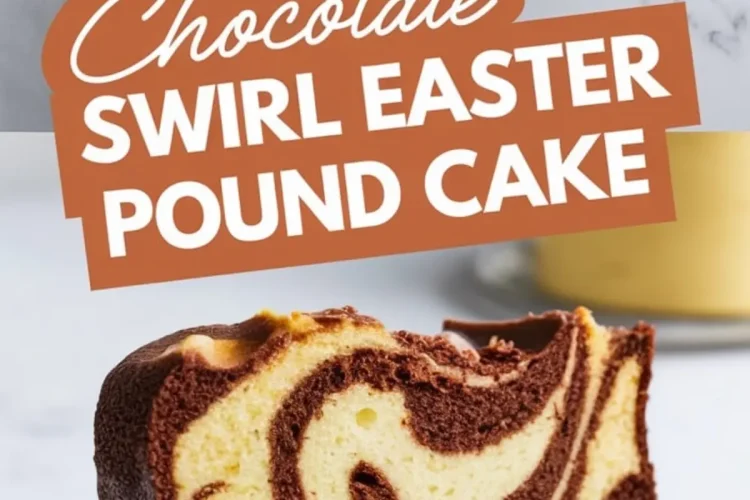My childhood included many sweet memories around the Easter table. I watched my grandmother pour cake batter into pans with a calm sense of joy. I followed her every move, fascinated by the gentle swirl of chocolate that created a bold pattern in each loaf.
Memories of those flavors stayed with me. I remember how the aroma filled the kitchen and made me hover, waiting for a taste. That tradition lives on in my own home, and I love sharing each slice with my friends.
Chocolate Swirl Easter Pound Cake always seems to blend festive charm and everyday comfort. I think it captures a bright side of spring, giving us a moist texture and delightful flavors in every forkful. My guests often tell me this dessert brings smiles whenever they see the marbled interior.
I lean on this recipe each spring, especially when I invite neighbors over for a relaxed afternoon treat. It tastes gentle yet gives a slight punch from the cocoa swirl. I rely on the fact that it’s straightforward to prepare, which keeps stress at bay.

Chocolate and Vanilla Batter: The Essence
The base of this cake hinges on quality ingredients. I like to have eggs at room temperature, which leads to a smoother batter and uniform baking. My choice of unsalted butter allows more control over the overall flavor, and it melts nicely with sugar to build a light, fluffy texture.
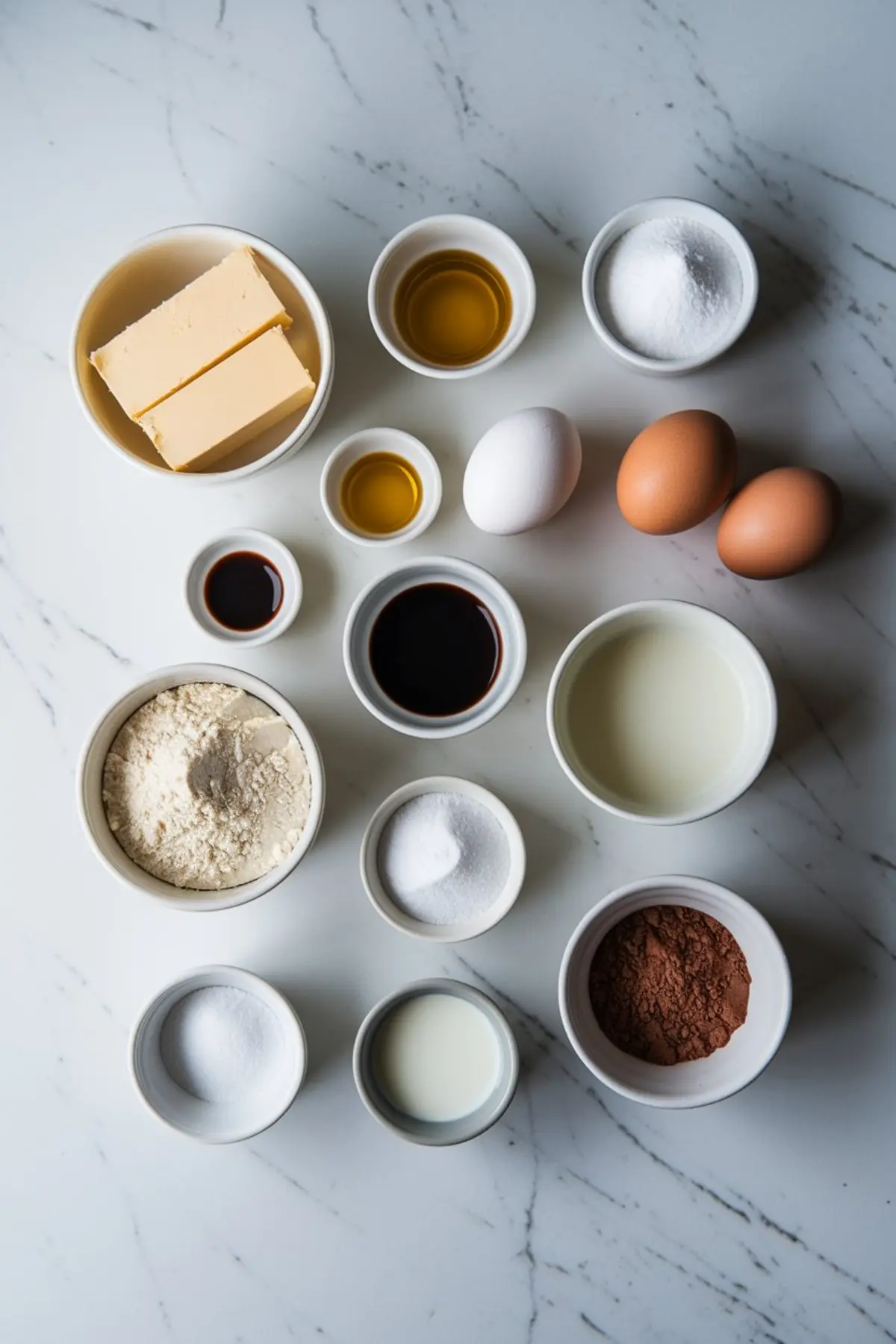
Rich vanilla extract balances the cocoa swirl later on. Good flour and a pinch of baking powder help the loaf rise just right. I keep a measured approach, mixing these staples to form the base that can carry the chocolate swirl.
I discovered that milk at room temperature prevents lumps and clumps in the mixture. My grandmother’s advice suggested adding dry and wet ingredients in parts, which avoids heaviness and preserves tenderness. I savor the way each item merges together, forming a creamy foundation.
Some folks worry about dryness in pound cakes. I discovered that careful mixing solves that. I whip the butter and sugar well, then beat in the eggs one at a time.
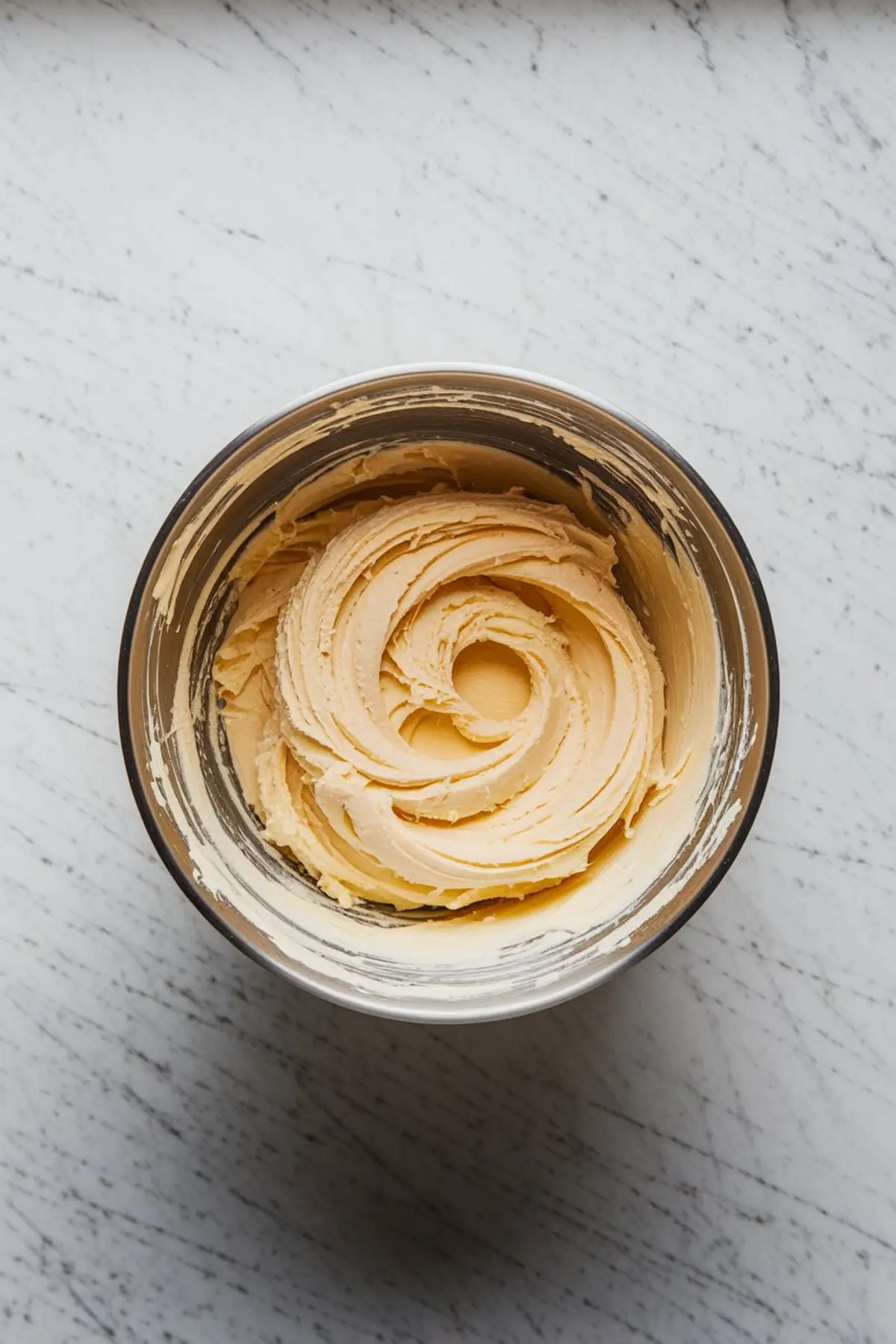
The steps rely on mixing enough to incorporate air, but overdoing it can affect texture. I watch the batter consistency closely, aiming for a soft, smooth look before dividing it for the chocolate swirl. That small detail has served me well each Easter season.
Crafting Your Swirl: Tips for a Striking Pattern
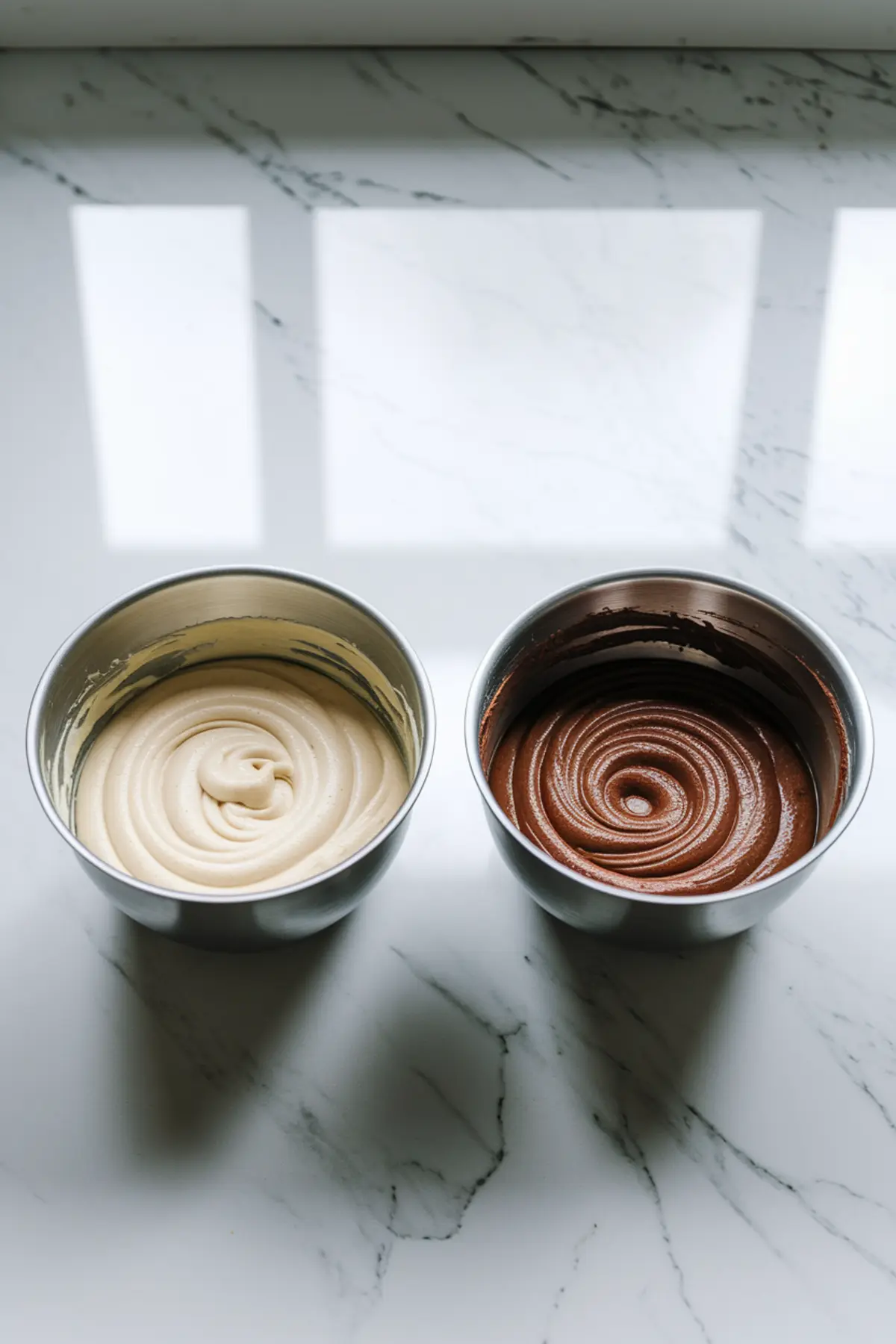
I reserve about a third of the plain batter in a separate bowl. That’s where I whisk in the cocoa powder, a spoonful of sugar, and a dash of milk to keep the swirl moist. The result becomes a deep brown blend that contrasts with the main vanilla portion.
My aunt once told me that technique matters when marbling. I drop spoonfuls of vanilla and chocolate mixtures alternately into the prepared loaf pan. Then I draw a skewer through the layers, weaving them together in a wavy pattern.
Swirling lightly helps maintain the eye-catching contrast of light and dark. Too much motion can lead to a muddy look. I prefer gentle spirals for a balanced design.
There’s an artistic angle to swirling. I like watching the batter twist and create shapes. People often think I spent hours planning the pattern, but it only takes a few seconds of steady movement.
The swirl intrigues those who see it sliced, and kids often think it’s some kind of magic trick. I recall my nephew asking if I painted the lines by hand. That sense of wonder often adds extra enjoyment to the Easter feast.
Oven Times and Troubleshooting
I pour the final layered batter into a 9×5-inch loaf pan. My oven stands ready at 350°F. The cake bakes for about 55 to 65 minutes, until the top develops a slight golden hue.
I tend to watch for early browning. If the crust grows too dark in the first half, I drape foil across the top to keep it from scorching. That quick fix wards off a bitter flavor.
A wooden skewer inserted into the center helps me confirm doneness. If it comes out clean, the cake is set. A bit of chocolate streak is fine, but raw batter needs more time.
Some ovens run hot, so I might adjust the time by a few minutes. My best friend often asks me why her edges brown more quickly than mine, so I suggested verifying her oven temperature with a gauge. That small check helps maintain consistent results.
Letting the cake cool for 15 minutes in the pan is helpful. Then I shift it to a wire rack to reach room temperature. It smells buttery and sweet, and waiting often feels like the hardest part.
Storing and Serving Suggestions
I tend to bake this cake the day before an event, especially if I want a convenient dessert option. Wrapping it in plastic keeps it fresh and locks in moisture. The flavors mingle overnight, so the slices taste even better the following day.
Individual slices also freeze well. I wrap them tightly, then thaw as needed. That works for times when I crave a quick treat without baking a new loaf.
When I serve it, I like to add a simple garnish. Some people enjoy whipped cream or a thin dusting of powdered sugar on top. Others prefer it plain with a warm beverage in hand.
A big reason I recommend this dessert is the visual impact. The marbled interior consistently sparks conversation. That swirl pattern stands out on a buffet table, and the taste reminds everyone of gentle spring days.
I’ve brought it to potlucks and found it to be a crowd favorite. People appreciate a moist texture and a sweet chocolate accent. Leftovers disappear fast, which signals success in my book.
Serving it with fresh fruit on the side adds color and brightness. I think strawberries or raspberries pair nicely with the buttery crumb. Simple sides tend to complement the cake without overpowering it.
Share Your Cake Adventures and Pin for Later
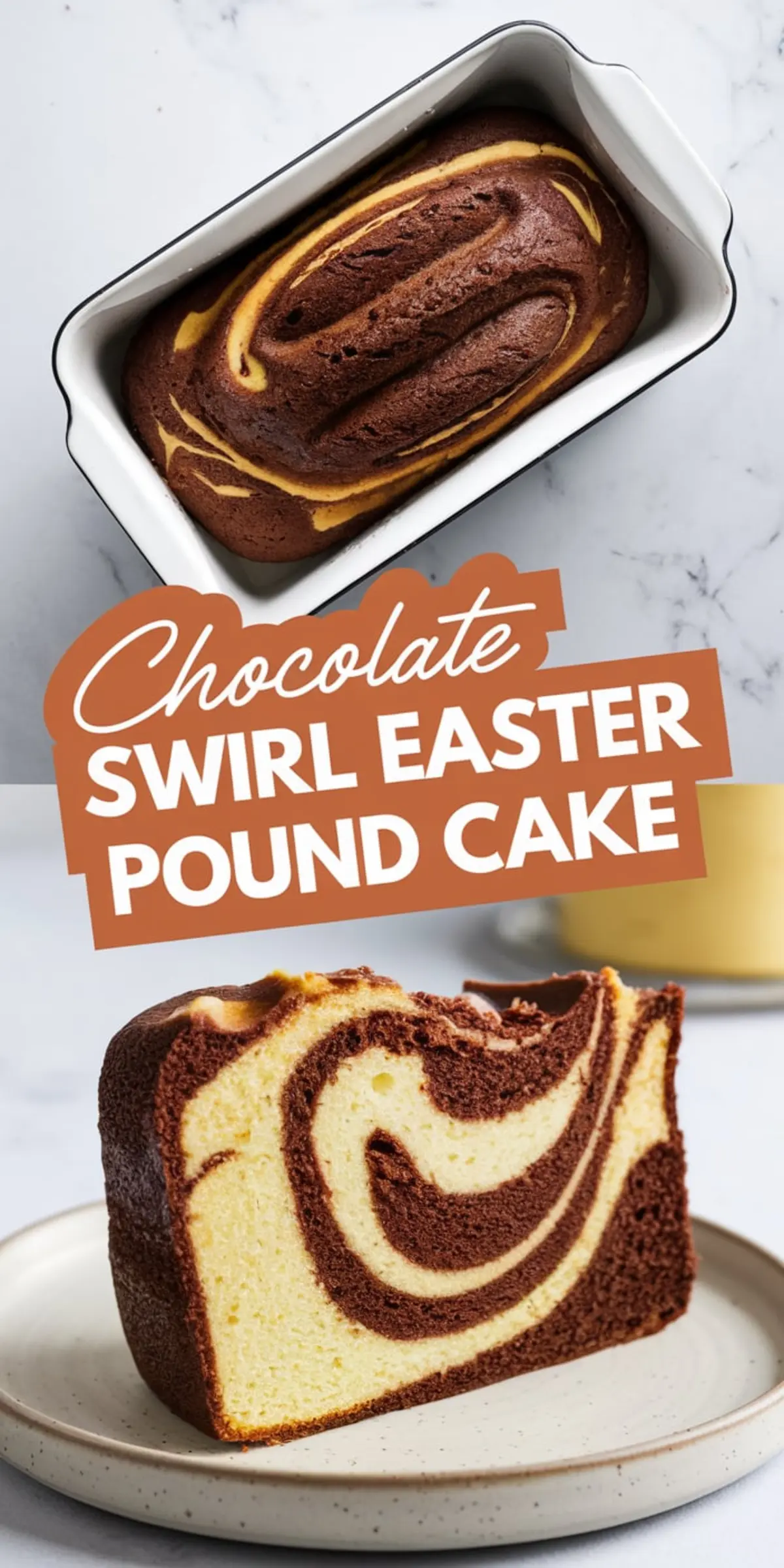
Feedback from readers helps me refine my cooking approach. I love hearing how your loaf turned out or if you added your own twist. Feel free to leave questions in the comments, so we can form a warm community of dessert enthusiasts.
I also invite you to save this page as a pin on your Pinterest board. That way, you can return whenever Easter ideas pop into your mind. Sharing recipes online helps us celebrate good moments together, even from afar.
Fellow bakers often tweak the swirl ratio, maybe using more chocolate batter or switching vanilla extract for almond. It’s rewarding to witness personal variations. This recipe gives a baseline that’s easy to adapt for different tastes.
I enjoy conversations on ingredient choices. Some switch whole milk for buttermilk or experiment with gluten-free flour. Those changes might need small timing adjustments, but the joy of exploration remains.
There’s a thrill in seeing your feedback, especially with photos of your finished product. That sense of community drives me to keep baking and sharing new ideas. A shared love for sweet treats ties us all together.
Feel free to share your results if you try other Easter creations. My blog features additional goodies that fit spring celebrations. I hope you find them useful as you plan your special gatherings.
More Easter Cakes
For more Easter Cakes, choose your favorite from these recipes:
Chocolate Swirl Easter Pound Cake

A buttery, moist pound cake with a stunning chocolate swirl makes this Easter dessert as beautiful as it is delicious. The rich vanilla and chocolate batters come together in an elegant marbled pattern that looks impressive but is simple to achieve. Perfect for spring gatherings or as a sweet homemade gift, this cake can be made a day ahead and tastes even better as the flavors meld.
Ingredients
- FOR THE POUND CAKE BATTER
- 1 cup (226g) unsalted butter, softened
- 1 ½ cups (300g) granulated sugar
- 4 large eggs, room temperature
- 2 teaspoons pure vanilla extract
- 2 cups (250g) all-purpose flour, sifted
- 1 teaspoon baking powder
- ½ teaspoon salt
- ½ cup (120ml) whole milk, room temperature
- FOR THE CHOCOLATE SWIRL
- 3 tablespoons unsweetened cocoa powder
- 2 tablespoons whole milk
- 1 tablespoon sugar (optional, for added sweetness)
Instructions
- PREPARE THE BAKING PAN: Preheat the oven to 350°F (175°C). Grease a standard 9x5-inch loaf pan with butter and dust lightly with flour, or line with parchment paper for easier removal.
- MAKE THE POUND CAKE BATTER: In a large mixing bowl, use a hand or stand mixer to cream the butter and sugar on medium speed until light and fluffy, about 3 to 4 minutes. Add the eggs one at a time, beating well after each addition and scraping down the bowl as needed. Stir in the vanilla extract. In a separate bowl, whisk together the flour, baking powder, and salt. Gradually add the dry ingredients to the butter mixture, alternating with the milk. Begin and end with the flour mixture, and mix just until combined to avoid overmixing.
- MAKE THE CHOCOLATE BATTER: In a small bowl, combine the cocoa powder, milk, and sugar (if using). Stir until smooth and free of lumps. Take about ⅓ of the vanilla batter and gently fold it into the chocolate mixture until fully blended.
- LAYER AND SWIRL THE BATTER: Spoon alternating dollops of vanilla and chocolate batter into the prepared loaf pan, layering them as you go. Once all batter is added, use a skewer or butter knife to gently swirl the two batters together, creating a marbled effect. Avoid over-swirling to keep the design clear.
- BAKE THE CAKE: Bake in the preheated oven for 55 to 65 minutes, or until a skewer inserted into the center of the cake comes out clean. If the top starts to brown too quickly, tent loosely with aluminum foil about halfway through baking. Let the cake cool in the pan for 15 minutes, then carefully remove it and place on a wire rack to cool completely before slicing.
Notes
The cake can be made a day in advance and stored tightly wrapped at room temperature. For neat slices, use a serrated knife and clean it between cuts.
Nutrition Information
Yield
12Serving Size
1Amount Per Serving Calories 135Total Fat 4gSaturated Fat 1gTrans Fat 0gUnsaturated Fat 2gCholesterol 66mgSodium 171mgCarbohydrates 20gFiber 1gSugar 3gProtein 5g

